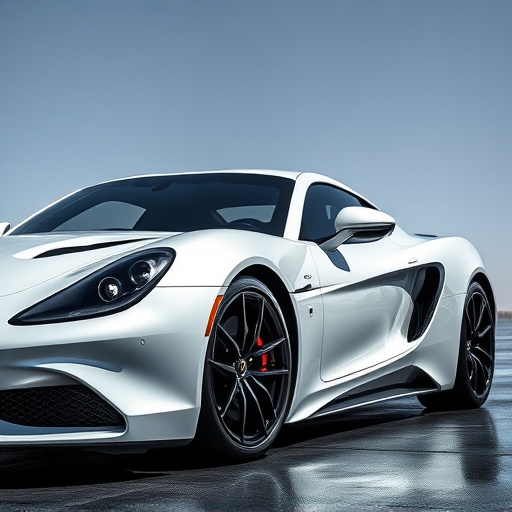A comparison of air intake filter sizes reveals that larger filters enhance vehicle performance by improving horsepower, torque, and responsiveness in high-performance cars or turbocharged engines. However, choosing the right size is crucial to avoid increased air path length and reduced filtration efficiency. Key factors include proper dimensions, media type, and cross-referencing with manufacturer guidelines. Oversized filters offer benefits like improved engine cleanliness and enhanced airflow, but they may face challenges in space constraints and fuel economy improvements that depend on vehicle specifics. Balancing performance gains with practical considerations is essential for optimal air intake filter sizes selection.
In the realm of automotive performance upgrades, oversized air intake filters have emerged as a popular choice. This article delves into the intricate details surrounding these components, specifically focusing on their impact and various facets. We’ll explore how understanding air intake filter sizes can significantly influence engine performance. Through a comprehensive comparison, we’ll guide you through essential factors to consider when evaluating oversized filters, highlighting potential benefits and drawbacks for an informed decision.
- Understanding Air Intake Filter Sizes and Their Impact on Performance
- Factors to Consider When Comparing Oversized Filters
- Benefits and Potential Drawbacks of Using Oversized Air Intake Filters
Understanding Air Intake Filter Sizes and Their Impact on Performance

When considering oversized filters, it’s crucial to understand how air intake filter sizes directly impact vehicle performance. Air intake filters are a vital component in any engine, as they ensure a consistent and clean flow of air into the combustion chamber. The size of these filters plays a significant role in overall efficiency. A larger filter surface area allows for greater airflow, enabling the engine to breathe more efficiently, resulting in improved horsepower and torque. This is especially noticeable in high-performance vehicles or those with turbocharged engines, where optimal air intake is critical.
Performing an air intake filter sizes comparison reveals that larger filters often provide better flow characteristics compared to smaller ones. This enhanced airflow can contribute to a smoother engine operation, reduced backpressure, and improved overall vehicle responsiveness. However, it’s essential to strike a balance; excessively large filters may require longer air paths, potentially leading to increased restriction and slightly reduced filtration efficiency. Therefore, selecting the right filter size is key to achieving optimal performance gains while ensuring the engine receives the clean air it needs for efficient combustion.
Factors to Consider When Comparing Oversized Filters

When comparing oversized filters, particularly for air intake systems, several key factors come into play. First and foremost, consider the filter’s dimensions to ensure it fits seamlessly within your vehicle’s engine bay or intended space. Oversized filters offer advantages like increased airflow and reduced restrictions, but only if they are appropriately scaled for your application.
Additionally, evaluate the media type and density of the filter element. Different materials and designs provide varying levels of efficiency in trapping dust, dirt, and other contaminants while allowing air to flow freely. Some oversized filters may have more advanced media structures that enhance performance, especially in extreme conditions. Always cross-reference filter dimensions and specifications with your vehicle manufacturer’s guidelines for a seamless upgrade.
Benefits and Potential Drawbacks of Using Oversized Air Intake Filters

Using oversized air intake filters can offer several advantages for vehicle performance and efficiency. These larger filters have a greater surface area, enabling them to capture more contaminants from the air stream, resulting in improved engine cleanliness. This is particularly beneficial for vehicles with high-performance engines or those operating in harsh environmental conditions, as it ensures optimal combustion and reduces the risk of premature engine wear. Moreover, oversized filters can enhance airflow, providing a boost in power and torque, especially under heavy loads or during acceleration.
However, there are potential drawbacks to consider. Larger air intake filters may require more space within the engine bay, which could be limited in some vehicles, leading to design challenges. Additionally, while they can provide better flow and filtration, oversized filters might not always translate into significant fuel economy improvements. An air intake filter size comparison study could reveal that the benefits vary depending on vehicle dynamics, driving conditions, and engine specifications, making it crucial to balance performance gains against practical considerations.
When considering oversized air intake filters, it’s crucial to balance performance gains with potential drawbacks. A thorough understanding of air intake filter sizes and their impact on engine performance, coupled with a careful comparison of different oversized filters, is essential for making an informed decision. By weighing the benefits against any possible negatives, you can ensure that your choice enhances vehicle efficiency without compromising reliability. An air intake filter sizes comparison guides users in selecting the optimal oversized filter to meet their specific needs and expectations.














